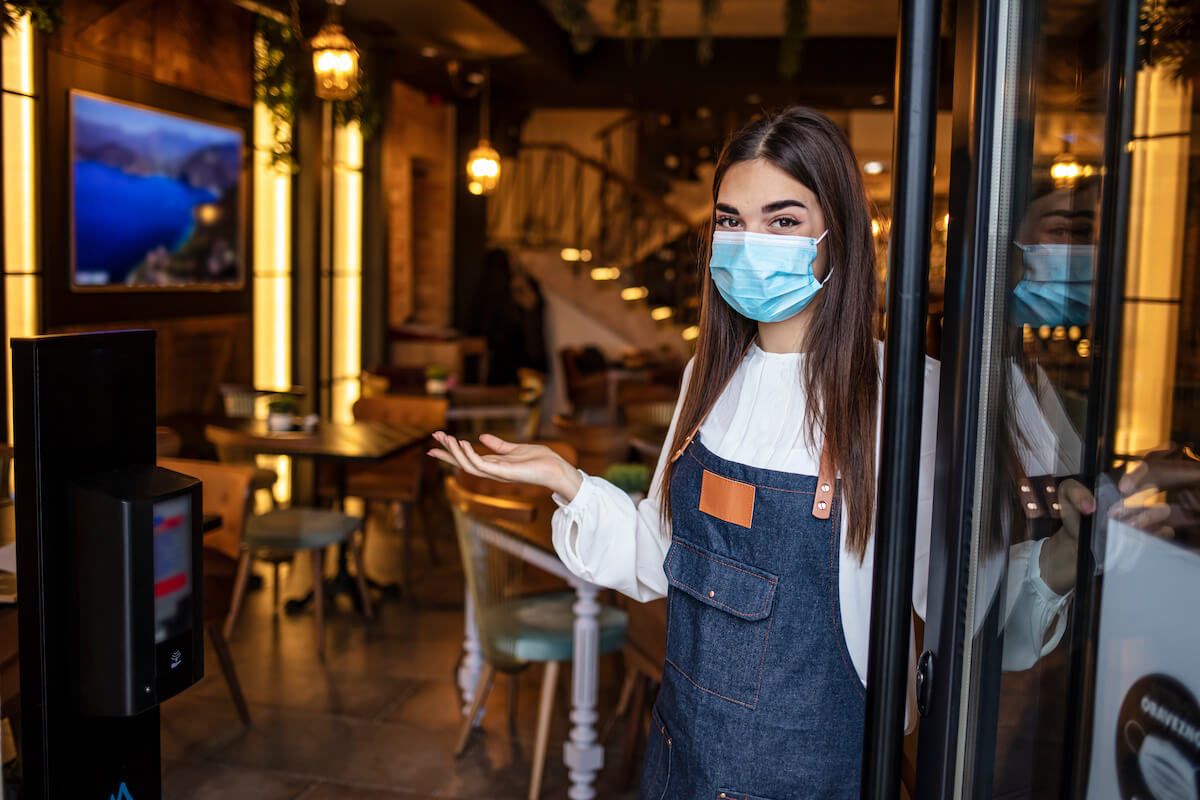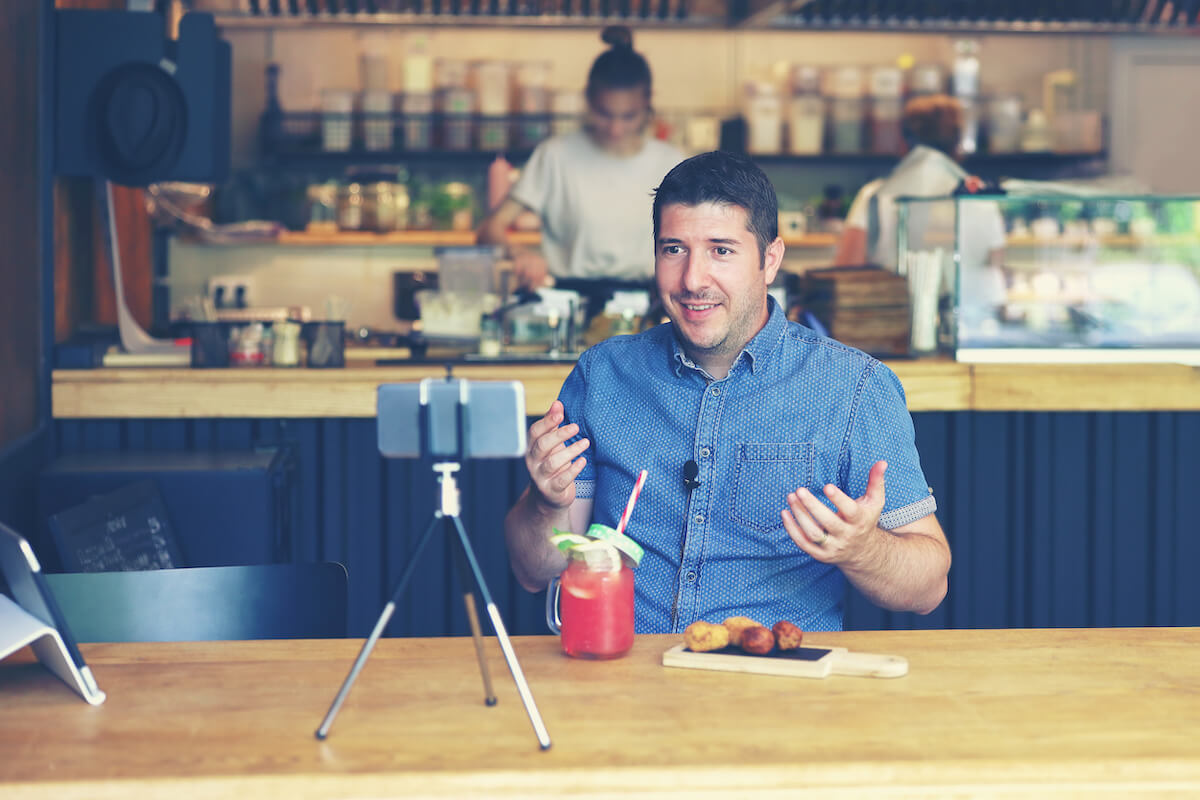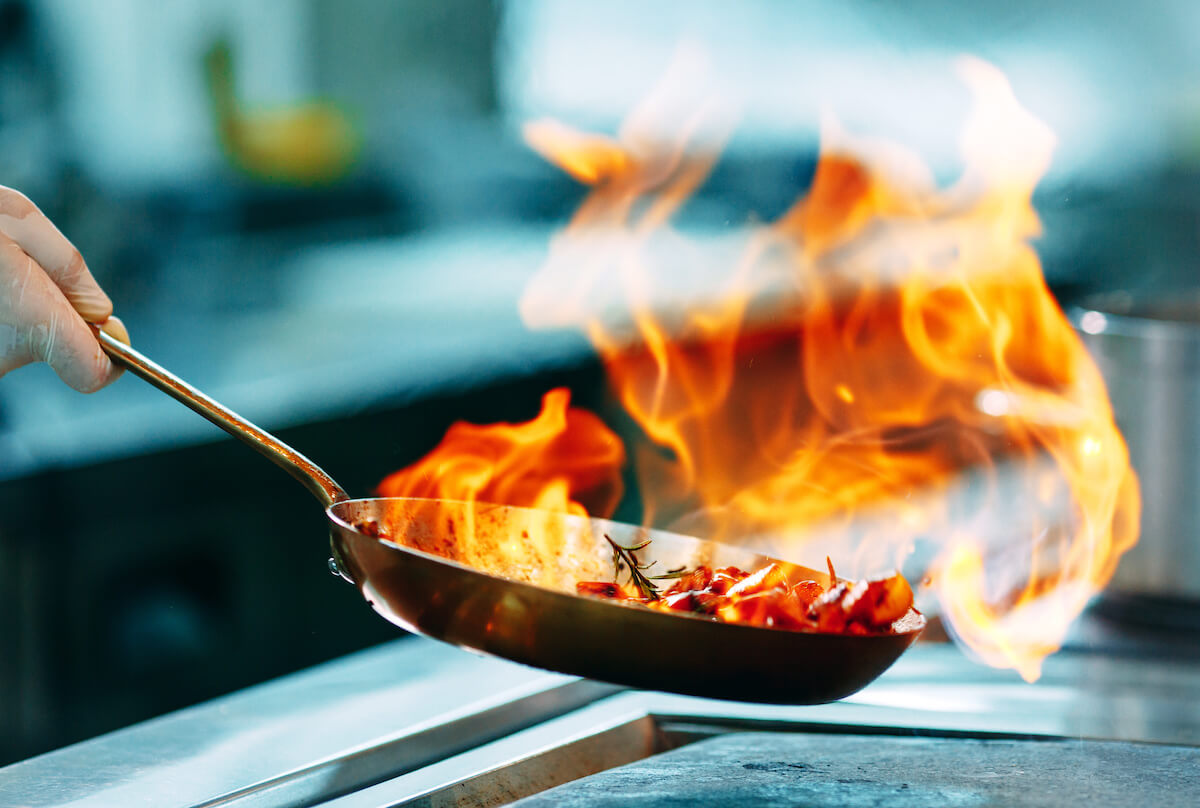Hospitality marketing: 8 trends to try now
Skip the article and turn takeaways into action by scheduling a call with our team.
It’s no secret that the hospitality industry has changed over the last two years. Restaurant owners and operators know that firsthand: Restaurants lost a collective $240 billion in 2020 alone.
While the pandemic brought on a lot of challenges, it inspired the restaurant industry to think outside the box. In a world where diners expect novel experiences, convenience, and speed, hospitality marketing has to fill in the gaps.
8 hospitality marketing trends for 2022
So, how should you market your restaurant to bring in more diners? Follow these eight hospitality marketing trends to put your restaurant brand on center stage.
1. COVID-safe protocols

How did your restaurants adjust to COVID? Your hospitality marketing strategies should touch on the approaches you’re using to keep both staff and diners safe.
For example, 55% of diners would feel safer in a restaurant if it had hand sanitizer dispensers. Even if COVID cases are declining in your area, it’s important to offer other pandemic-friendly options like:
- Asking staff to wear masks
- Six-foot spacing between tables
- QR code menus
- Outdoor dining, even in winter
- Takeout for alcohol and food
- Signs indicating that a table has been sanitized
- Curbside delivery
In terms of marketing, be sure to regularly announce your COVID-safe protocols on your website design, social media, and in-store signage. This will not only help diners feel more comfortable, but it reminds them of what they can expect during their experience.
2. Sustainability initiatives
Did you know that 45% of consumers are interested in sustainable hospitality brands? That includes the restaurants they frequent, so if you aren’t already, implement sustainability as part of your hospitality marketing strategy.
This might look like:
- Serving vegan dishes
- Reducing food waste
- Donating uneaten food
- Growing your own produce
- Participating in a local CSA
- Operating green buildings with solar power or low-flow toilets
- Opting for reusable utensils, like metal straws or cloth napkins
3. Niche restaurant themes
How can you make your tableside restaurants stand out in a crowded market? It might sound a little kitschy, but theming your restaurants can make you stand out from your competitors.
This doesn’t mean you have to create your own version of Medieval Times. You can still create an elegant, elevated dining experience that piques diners’ imagination.
For example, if you’re having a hard time standing out as a traditional fried chicken joint, could you be a Hawaiian fried chicken restaurant to tie back to your familial roots? By niching down, you separate yourself from your competitors and give diners a real reason to try your food.
Trends change over time, but right now, diners respond well to restaurant themes like:
- Lifestyle-themed restaurants that follow Whole 30, Paleo, vegan, etc.
- International cuisine that isn’t represented in the local food scene
- Specific time periods like the ‘90s
- Instagram aesthetics, like cottagecore or dark academia
As fun as it is to come up with interesting themes, remember that the kitsch can’t overshadow the food. Seventy-two percent of diners say that food quality is the most important factor when they choose a restaurant, so make sure the recipes are on point.
4. Influencers

Need to drum up word-of-mouth referrals to your restaurants? Try partnering with foodie influencers on your social media platforms. Forty-nine percent of diners depend on influencer recommendations to find new restaurants, so partner up with a few influencers in your area.
Make sure that your influencers meet these criteria to help you book more reservations:
- Right location: Which foodies live in your area? Check social media to find influencers who are talking about food in your city.
- Solid following: Look for local foodies who already have a solid Instagram or TikTok following. Influencers with 10,000 followers or more can get you plenty of local traction, but make sure their followers are in your target audience.
- Engagement: The influencer needs to have an engaged following. Otherwise, it’s unlikely that their followers will actually book reservations at your restaurant. Make sure the influencer is interacting with the comments on their posts, and that their followers have generally positive things to say.
5. Short-form video marketing
Restaurant owners and operators are busy people, but you still need digital marketing to promote your restaurants. But instead of blogging about it, make a video!
Customers prefer short-form videos (which are less than one minute long) because they’re digestible and easy to share. Short-form videos also happen to be faster to create than blogs, so they’re a real win for your hospitality marketing, too.
Not sure what to post? Whether you’re on Instagram Reels or TikTok, you’ll get a lot of traction with content like:
- Challenges: Hashtag challenges are the lifeblood of TikTok. Why not create a challenge of your own? Pair it with a current song or soundbite and your trend will catch on with potential customers in no time. For example, right now “Love You So” is a lighthearted trending sound. Pair it with a fun challenge with your staff, like a pizza tossing contest.
- User-generated content: Diners want to hear from other diners. So why not feature happy customers in your videos? Ask diners to submit a video about their dining experience and reshare it (with their permission) on your social media.
- Walkthroughs: What’s it like to dine at your restaurant? Condense the dining experience into a 60-second video to encourage more reservations.
- Menu highlights: Share your newest dish or cocktail with a breakdown of ingredients, complete with tantalizing shots of it being made while a staff member narrates.
6. Mobile app

Fifty-two percent of internet traffic comes from mobile phones. And, thanks to the pandemic, digital orders are predicted to account for 30% of all restaurant orders by 2025.
While your restaurant’s website can offer a streamlined online ordering experience, you really need a mobile app. Mobile apps encourage customer loyalty, process orders more efficiently, and increase reservations.
When talking to your developer, make sure your mobile app includes features like:
- Customer service: Give diners the immediate help they expect. Add a chatbot to your mobile app to answer simple questions, like their order status or your restaurant hours, without overwhelming your staff.
- Menu: This is especially helpful if your restaurants have slightly different menus, or if you change your menus with the seasons.
- Reservations: What if your staff didn’t have to take reservations over the phone? Speed things up by offering reservations in your mobile app or sending them to your Yelp Business Page where they can make a reservation in a few taps.
- Payment: Diners want to be able to pay for their meal without cash or a card. A mobile app allows them to simply tap their phone or scan a QR code to complete the transaction.
7. SEO
Ninety percent of diners look up a restaurant online before they eat there. Does your online presence make your restaurant look enticing?
Search engine optimization, or SEO, helps your restaurant look its best on search engines like Google. It isn’t an overnight fix, but a long-term SEO campaign can help your restaurant stand out online and bring in more reservations.
To boost your SEO, make sure your hospitality marketing strategy includes:
- Keeping your Yelp page up-to-date: Ninety-two percent of diners read reviews. But search engines are also checking out your reviews! By keeping your Yelp Business Page updated, you’ll be ready when reviewers and search engines find you. Freshen up your page with your hours, menus, photos, indoor and outdoor dining availability, and the latest news.
- Localization: Your restaurant is competing with other local restaurants for diners’ attention. Revamp your website and social media copy to be as localized as possible. Sponsor a Little League team, join the Chamber of Commerce, and give to local charities to earn local backlinks to your restaurant website.
8. Fresh approaches to the customer experience

Part of hospitality marketing is improving the diner experience. Restaurants have to change with the times to delight their diners at every turn.
Changes are exciting, and they definitely get diners talking. If it makes sense for your restaurants, try revamping the customer experience with exciting updates like:
- Offering to-go options for your tableside dining brand
- Swapping processed ingredients for whole foods (bonus points if they’re in season!)
- Tasting experiences
- Automated kiosks to serve ice cream, smoothies, or prepared snacks
- Offering family-style dining
- Scheduling monthly cooking classes with your executive chef
- Movies, shows, or other forms of entertainment during their meal
- A limited-time mystery menu
- Serving alcohol-free mocktails or gourmet beverages
- Adding e-commerce options to your website, where you can sell sauces, jams, and rubs that your diners rave about
- Switching to a digital menu board with pricing, which can increase yearly store sales by $16,000
Revamp your restaurant marketing campaigns
The hospitality sector is a grind, but it can be incredibly rewarding. Follow these eight trends to stay at the forefront of hospitality marketing, boosting brand awareness and revenue for less hassle.
The new normal doesn’t have to be a challenge. Tools like Yelp Guest Manager help restaurant owners and operators better manage their front-of-house. Get a Yelp demo now to see how restaurants that use Guest Manager paired with Yelp Ads experience 87% more traffic on their Yelp business page.